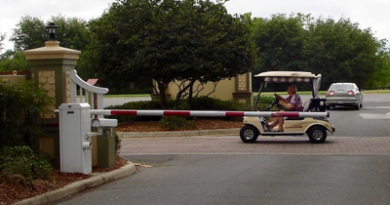Tariffs and Anit-Dumping Penalties: How They Will affect the Market for Golf Car-Type Vehicles
The industry that produces golf car-type (GCT) vehicles is facing major changes as a result of increased tariffs on virtually all Chinese imports, plus anti-dumping and countervailing duty penalties specifically on GCTs from China. The just-published comprehensive analysis of the industry and market by Small Vehicle Resources explores the ramifications of this U.S. government policy change.
Policy changes five rise to new challenges
It would seem obvious as to who were the winners and losers in the new tariff policies. Textbook analysis would show that domestic production increases relative to imports, prices go up and the overall market demand declines. This is clearly what is anticipated by petitioners to the International Trade Commission (USITC). The American Personal Transportation Vehicle Manufacturers Coalition, made up of Club Car and Textron Specialized Vehicles, has been largely successful in making the case that Chinese companies were being subsidized in materials procurement among other government-based favors. Nothing in economic policy is without consequences for the market, whether intended or unintended:
- Assuming adequate implementation of anti-dumping and countervailing duty assessments, the result of protecting domestic manufacturer’s from unfair competition is the likely outcome; as intended;
- The penalties applied, however, cause an upward shift in the industry cost structure, meaning higher prices, other things equal, at retail; Thus,
- Club Car, E-Z-GO, and Yamaha will be challenged to maintain their market and possibly expand it through product upgrades and innovative market strategies to find new markets;
- The last half of 2024 witnessed a rush to beat the tariffs and penalties with a massive run-up of partially-assembled imports, which will be sold off over time putting downward pressure on retail prices.
This last problem is extensively analyzed in SVR’s new industry report. Given certain assumptions about responsiveness to price changes, detailed tables are laid out indicating the rate of sell-off and the price impact.
How did the competitive landscape change, triggering pleas for penalties?
One might ask what change in the in the market environment that actually triggered the Coalition’s formation and petition before the USITC/ We believe at SVR that it was the logistical packaging of GCT vehicles that is at the root of the answer.
Afterall, Chinese imports were coming into the country for quite some time before 2022, which when imports increased substantially and increased even more thereafter. Prior to this recent period, imports were coming at much lower numbers. In fact, in terms of the trade balance exports were greater than imports.

Pictured here is the innovation that changed the make-up of the industry. Packing GCT vehicles in partially assembled form greatly reduced shipping costs and paved the way for complementary start-ups in the United States to undertake final assembly and sales.
As can be readily seen in the photo there are inherent cost benefits to this form of packaging. Unit size is greatly reduced, thereby significantly more units that can be shipped in a standard-size container.
As it turned out the reduced cost package was so attractive that it attracted numerous startup companies to enter the market. transforming the industry from a three company oligopoly to a much more competitive structure. Paradoxically, general government policy encourages more, rather than less, competition. The kicker here is, of course, the unfair competition that sparked the growth in industry participation. That is the exception to the general policy rule.
Will the startups remain competitive or close their doors?
Whether any company stays in business boils down to whether a profit can be made. The anti-dumping penalties and countervailing duties are wide ranging from 110(* one Chinese manufacturer, Guangdong Lvtong New Energy Electric Vehicle Technology Co., Ltd. of f119% fore the dumping penalty and 31% for the countervail duty assessment to 478% and 678% dumping and countervailing duty assessments, respectively, for other companies. A breakout of these assessments can be seen by clicking on the following link to the USITC website: https://www.trade.gov/ec-ad-cvd-final-determinations-low-speed-personal-transportation-vehicles-china .
The average import price under HTS code for golf carts is about $3,k500. Using that as benchmark, companies supplied by Guangdong Lutong will escape the severest penalties and have the best chance of staying in business. The estimated landing cost to them would put the landed cost at a little over $4,00. For those assessed at the high end of penalty rates, the cost would increase by as much as six times to over $18,000. This is even before final assembly takes places. These companies, in all likelihood, will close shop.
Partial assembly from a historical perspective
For those who follow the historical evolution of diverse industries, the partial assembly of GCTs is yet another example of how packaging and logistics can shape an industry. Think of Iowa Beef back in the 1950s. In that case innovation was to package different cuts of meat at the factory and ship the frozen packages directly to grocery stores or local warehouses. The process completely revolutionized the distribution of meat to the consumer and in so doing, virtually eliminated the butcher shop at your local grocery store.
The packaging of GCTs was much the same thing, albeit in reverse. For GCTs the process changed from distribution of parts (and finished units) to partial assembly in which most parts are collected at the factory to create the most cost effective means of creating value-added and shipping to the market.
Implementing the assessments
The effectiveness of the penalty assessments will depend on how well they are implemented. At the same time, affected companies in the U.S. and in China will be devising ways to avoid the assessments, such as transshipment to third countries. We have not seen the last of the import issues by any means. Stay tuned.
________
Contact the Author: Steve Metzger at smetzger@smallvehicleresource.com. Or check out our website at www.smallvehicleresource.com, where you will find an extensive database of vehicle models and can make side-by-side comparisons of vehicles based on a full set of specifications.

